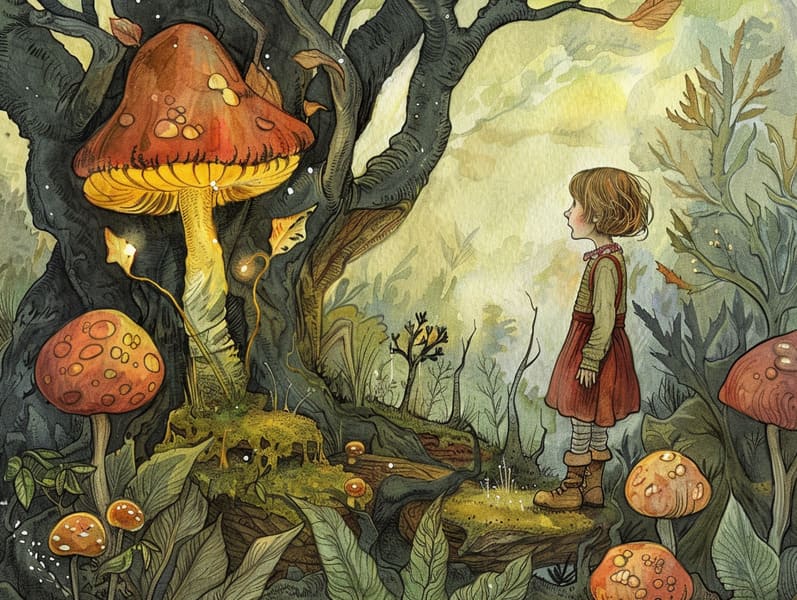The Story Behind Bedtime Fairy Tales and the Eternal Captivation.
The Story Behind Bedtime Fairy Tales and the Eternal Captivation.
Blog Article

Famous fairy tales have old origins. These tales have been transmitted from one generation to the next centuries before they were ever written down. They came from a variety of cultures, including American traditions. They were initially transmitted among older generations, often carrying themes and messages relevant to the societal norms and beliefs of the time.
Jacob and Wilhelm Grimm, Jacob and Wilhelm (the Grimm brothers), were among the first to gather and publish many of these beloved fairy tales. Their collection, "Grimm's Fairy Stories," included tales like "The True Bride," "The Story of Hansel and Gretel," and "Little Snow White," which have since become hallmarks in the world of beloved fairy tales. Similarly, the Danish author's enchanting narratives, such as "The Story of the Little Mermaid," and "The Story of the Ugly Duckling," have touched hearts worldwide, securing their place in the pantheon of classic fairy tales.
Even though they are old, traditional fairy tales remain as impactful as ever, especially as children's bedtime stories. These magical stories are now available in various formats, including richly illustrated books, fantastical animations, and internet fairy tales.
Their enduring popularity can be connected to several charming aspects:
Life Lessons: Traditional fairy tales often present important moral lessons. Fairy tales like "The Boy Who Cried Wolf" teach the virtue of truthfulness, while "The Story of the Tortoise and the Hare" stress the merits of persistence and unassuming nature. These stories offer young readers clear distinctions between virtue and vice, forming their moral compass in a subtle yet meaningful way.
Kindness and Comprehension: Old fairy tales frequently present figures facing problems and hurdles, inciting audiences to identify with their struggles and support their triumphs. For instance, "Beauty and the Beast" points out the importance of seeing beyond the surface to know the true character of a character, promoting warmth and knowledge.
Cultural Understanding: Many traditional fairy tales are saturated in the cultural contexts from which they sprang. Discovering these tales can provide enlightening views into different historical contexts, strengthening a sense of cultural understanding and knowledge.
Inventiveness and Imagination: The enchanted elements in old fairy tales—magical beings—engender children’s imaginations. These stories carry readers to otherworldly realms, triggering innovative dreams and a sense of amazement that lasts a lifetime.
Traditional fairy tales are not only captivating but also illuminating. They serve as alluring tools in building various intellectual and emotional capacities in little ones. When traditional fairy tales are voiced, they develop language proficiency by bringing new language and elaborate sentence structures. This practice also strengthens listening skills and attentiveness, as young readers stay focused, anticipating to see what happens next.
Furthermore, discussing the themes and characters of old fairy tales can promote problem-solving abilities and intellectual skills. Little ones learn to spot patterns, guess what will happen, and comprehend cause and effect. These analyses also promote children voice their thoughts and feelings, fostering their emotional intelligence.
In today’s modern era, the existence of digital storybooks has made these fairy tales more available than ever. Websites and digital apps share broad selections of old fairy tales that can be read or listened on anytime, anywhere. Fairy tales voiced are particularly liked, providing an entertaining method for young readers to be a part of these entrancing tales. Voice books and read-out-loud videos lead characters and settings to life, often paired with captivating melodies and instrumentals that boost the tale-telling adventure.
The timeless charm of timeless fairy tales lies in their ability to adapt to contemporary times while maintaining their underlying messages. Contemporary updates of these stories often show more different figures and modern settings, making them pertinent to today’s audience. However, the essential messages of valour, charity, and fair play remain unchanged, continuing to affect children of all ages.
Classic fairy tales also offer a sense of contentment and predictability. They deliver up a coherent narrative with a straightforward beginning, middle, and end, often finishing with the termination of conflicts and the triumph of justice over injustice. This predictability can be soothing for young readers, introducing a sense of steadiness in an fluctuating world.
Old fairy tales continue to delight and enlighten new generations, maintaining their grace and impact in modern society. As bedtime stories for check it out kids, they supply a perfect blend of wonder and wisdom, supporting moral values, empathy, and creativity. The existence of internet fairy tales and the sought after status of fairy tales told out loud guarantee that these old stories remain accessible to new generations.
By keeping and making known these narratives, we continue to glorify the rich tapestry of creativity and cultural heritage. Whether you are exploring a vibrantly illustrated book, delving into a online library, or listening to an spoken story, the fascination of children's fairy tales is always within reach. These fairy tales convey of the steadfast nature of storytelling and its ability to draw us together across centuries and lands.
Even if you are accessing a beautifully illustrated book, viewing a digital library, or listening on an audiobook, the radiance of popular fairy tales is always within reach.
These fairy tales remind us of the steadfast spell of tales and its ability to tie us across time and space, forming a connection that fascinates and enlightens alike.